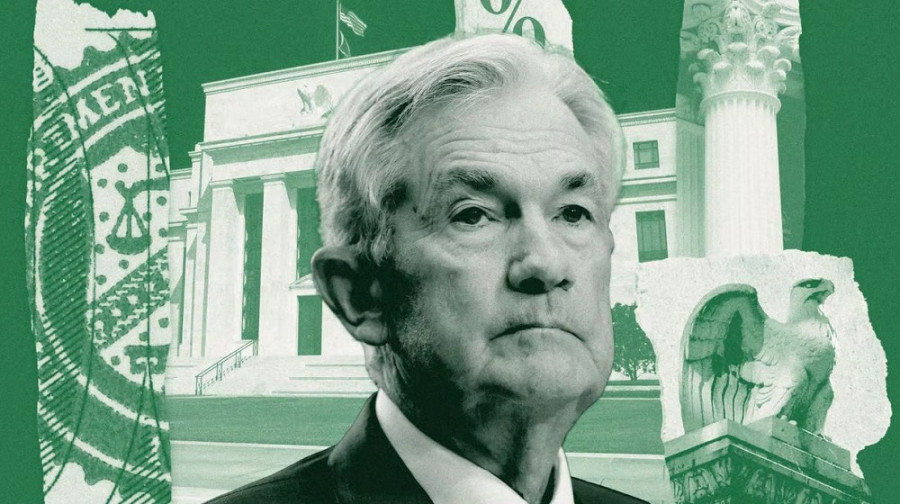The results of the January meeting of the Federal Reserve are eloquently illustrated by the CME FedWatch Tool, which, as is known, shows the implied probability of a rate change at each of the upcoming meetings. As of Wednesday morning, the probability of a rate cut at the March meeting was nearly 50%. However, by Thursday, this probability is estimated at 30%. Consequently, the market is 70% confident that the Federal Reserve will maintain the status quo at the next meeting.
In essence, the American regulator implemented the basic, most likely scenario: it kept the parameters of monetary policy unchanged and simultaneously tightened its rhetoric. The central bank signaled that it would not rush with easing monetary policy, contrary to rumors of a "dovish" nature.

No sensation occurred: for several preceding weeks (essentially throughout January), Federal Reserve representatives unanimously stated that it was too early to celebrate victory over inflation, and certainly not to hurry with a rate cut. The key role here was played by the Consumer Price Index (CPI). The overall CPI unexpectedly accelerated in December after months of consecutive decline.
Considering such preceding information, traders were mostly prepared for the regulator to take a more hawkish position – at least compared to the December meeting, where Fed Chairman Jerome Powell effectively announced a future easing of monetary policy. Undoubtedly, there was some intrigue, as the core CPI, the Producer Price Index, and the core PCE index demonstrated a downward trend in December. However, Federal Reserve members coolly dismissed this fact, stating that inflation had weakened over the past year but still remained high.
A certain nod to the "doves" of the Federal Reserve was still made: Powell excluded from the accompanying statement the phrase about his readiness for further tightening of monetary policy "if necessary." In other words, it can be said that the rate hike cycle is officially completed.
But that's essentially it: all other theses had a "moderately hawkish" character. In particular, in the same final statement, the regulator stated that it does not consider it advisable to lower rates until there is confidence that inflation is steadily moving towards the target two percent level.
Powell was surprisingly straightforward at the final press conference. Contrary to some experts' predictions (especially economists from Goldman Sachs), he did not try to balance his rhetoric but directly stated that, judging by the January meeting, the regulator will not cut interest rates in March. According to him, the members of the regulator are concerned that inflation is stabilizing at a high level, although a more negative scenario cannot be ruled out. As the head of the Federal Reserve noted, if inflation rises again, "it will be a surprise," but such a scenario cannot be ruled out.
At the same time, the Federal Reserve noted the growth of the U.S. economy in the fourth quarter. The report came out in the green, exceeding forecasted values. According to central bank representatives, these data indicate that economic activity is growing at a confident pace.
As for other macroeconomic indicators, the Central Bank stated that the growth of employment has slowed down but remains high, the unemployment rate remains low, and inflation has decreased but still remains high.
In other words, the American regulator ruled out a rate cut in March but left the door open for subsequent meetings. The fate of the rate now depends on the dynamics of key macroeconomic indicators, primarily in the areas of inflation and the labor market.
According to Fed Chair Powell, an unexpected weakening in the labor market "will force a rate cut sooner." If the basic scenario unfolds, where the economy is healthy and the labor market is strong, the regulator, according to Powell, can afford to be more cautious when discussing the timing of a rate cut.
In this context, Nonfarm Payrolls (NFP) become particularly significant. The ADP report, which serves as a kind of "harbinger" of the official release, came out in the red on Wednesday: with a forecasted growth of 148,000, the figure came in at 107,000. If employment disappoints dollar bulls on Friday as well, the greenback may come under pressure again.
Overall, the reaction of the American currency is restrained. Paired with the euro, the greenback tested the 1.7 figure, then returned to its previous positions on Thursday.
The point is that the Federal Reserve ruled out a rate cut in March but effectively allowed for the realization of this scenario in May. According to the CME FedWatch Tool, the probability of a 25-point rate cut at the May meeting is 62.5%, and a 50-point cut is 32%. If January NFP turns out to be in the red zone, the probability of a 25-point rate cut in May will increase to 70-75%, putting pressure on the greenback.
Thus, the Federal Reserve provided some support for the dollar by ruling out a rate cut in March, but did not trigger a dollar rally as it allowed for a rate cut at one of the subsequent meetings, including May. Now much will depend on the dynamics of key indicators in the labor market and inflation. Therefore, all attention is on Nonfarm Payrolls. Friday's release is capable of causing strong volatility among dollar pairs, as this report will be the first "test" for the greenback in anticipation of the spring meetings.
The material has been provided by InstaForex Company - www.instaforex.comfrom Forex analysis review https://ift.tt/4L1CNuh
via IFTTT
